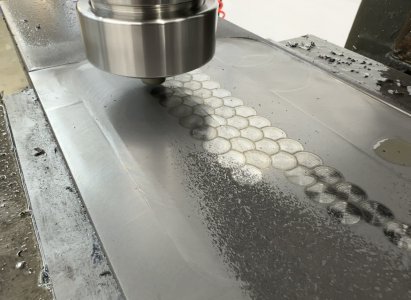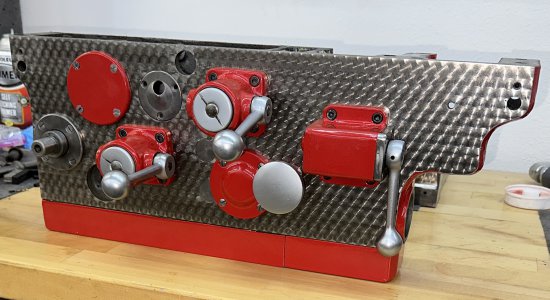- Joined
- May 2, 2021
- Messages
- 330
When Jim first nudged me to get this thing modernized/ running CNC - I was a little skeptical.
Why do I need CNC?
Can you imagine just having a mill?!
Hell - I can buy a rotary table!
I'll be fine...
Hahahaha.
What can I say?
I am blown away with all that can be done with a CNC.
Few parts below as example.
One made free hand, one from a photo.
(A PHOTO!)
Damn.
First up - Jim encouraged me to improve my chops with some practice.
What better than fancying up the mill a bit more?
After some wrestling with the basics of Fusion 360 - I managed to design my first part.
For anyone else thinking of going down this road - I would offer the following encouragement:
1. You can download Fusion 360 for free - and maintain it free - if you are not doing it professionally. Google "Fusion 360 for personal use".
2. If you already have some experience with another program - like Adobe Illustrator, or Corel, or Auto Cad - you can start off by making your part there and importing the part to Fusion as a DXF file. Will speed you.
So I did.
And the first part I made was a "spine" for the Beast, to hold the conduit.
'Cause you know, overbuilding...
The spine in Fusion:
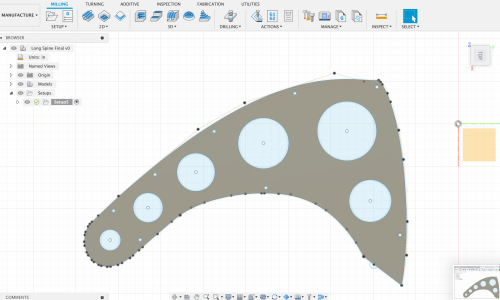
Which I then cut on the machine from a $8 piece of scrap:
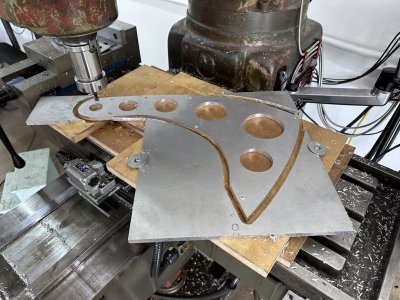
and then mounted that to the back of the machine to hold the conduit. (Note the critical aerodynamic holes cut to allow strong crosswinds to pass).
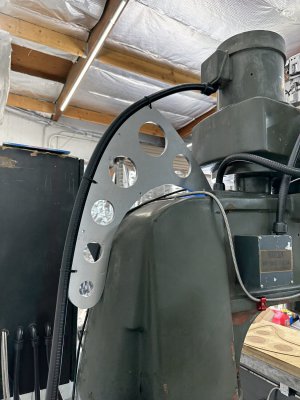
Then it was on to making my first structural part - out of steel - for my Vespa.
I'm making a custom intake manifold, and needed a base plate.
Normally these are a nightmare of bandsaw and angle grinder - producing a decent one off part.
This time - since I had an existing one, I shot a picture of it and then simply scaled the photo in Corel to match the existing part width and height - tracing it to create a DXF file I could import to Fusion.
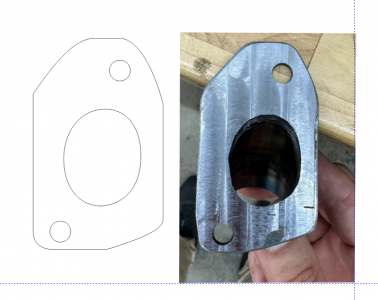
In Fusion, I traced that part and extruded it:
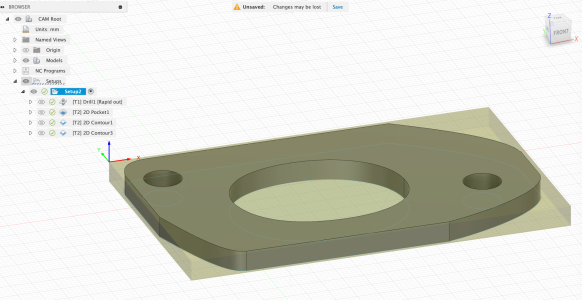
Fusion can create G code - and Jim is training me on how to do a "setup" that considers materials and processes.
In the above screen shot - you can see the steps I plan to take cutting it - which include drilling, making the inner pocket, giving that inner contour pocket a clean up cut, and then doing the outer contour.
And here it is being cut:
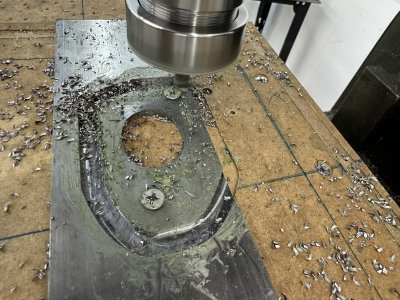
And finally - here is the part.
I pride myself with my angle grinder skills - but this is something else all together.
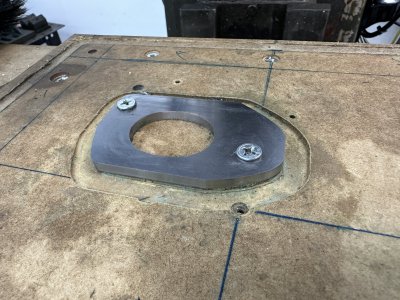
Two weeks of wrestling and cussing - and I am making parts.
If you are on the fence/ considering this for your own project - I would encourage you to take the leap.
So cool to be able to make custom parts with such high precision and quality for my various projects.
Learning a new skill - and having some fun (most of the time...)
Out of the gate with plenty to learn.
Why do I need CNC?
Can you imagine just having a mill?!
Hell - I can buy a rotary table!
I'll be fine...
Hahahaha.
What can I say?
I am blown away with all that can be done with a CNC.
Few parts below as example.
One made free hand, one from a photo.
(A PHOTO!)
Damn.
First up - Jim encouraged me to improve my chops with some practice.
What better than fancying up the mill a bit more?
After some wrestling with the basics of Fusion 360 - I managed to design my first part.
For anyone else thinking of going down this road - I would offer the following encouragement:
1. You can download Fusion 360 for free - and maintain it free - if you are not doing it professionally. Google "Fusion 360 for personal use".
2. If you already have some experience with another program - like Adobe Illustrator, or Corel, or Auto Cad - you can start off by making your part there and importing the part to Fusion as a DXF file. Will speed you.
So I did.
And the first part I made was a "spine" for the Beast, to hold the conduit.
'Cause you know, overbuilding...
The spine in Fusion:

Which I then cut on the machine from a $8 piece of scrap:

and then mounted that to the back of the machine to hold the conduit. (Note the critical aerodynamic holes cut to allow strong crosswinds to pass).

Then it was on to making my first structural part - out of steel - for my Vespa.
I'm making a custom intake manifold, and needed a base plate.
Normally these are a nightmare of bandsaw and angle grinder - producing a decent one off part.
This time - since I had an existing one, I shot a picture of it and then simply scaled the photo in Corel to match the existing part width and height - tracing it to create a DXF file I could import to Fusion.

In Fusion, I traced that part and extruded it:

Fusion can create G code - and Jim is training me on how to do a "setup" that considers materials and processes.
In the above screen shot - you can see the steps I plan to take cutting it - which include drilling, making the inner pocket, giving that inner contour pocket a clean up cut, and then doing the outer contour.
And here it is being cut:

And finally - here is the part.
I pride myself with my angle grinder skills - but this is something else all together.

Two weeks of wrestling and cussing - and I am making parts.
If you are on the fence/ considering this for your own project - I would encourage you to take the leap.
So cool to be able to make custom parts with such high precision and quality for my various projects.
Learning a new skill - and having some fun (most of the time...)
Out of the gate with plenty to learn.


